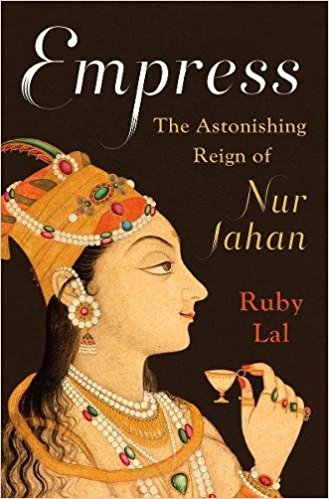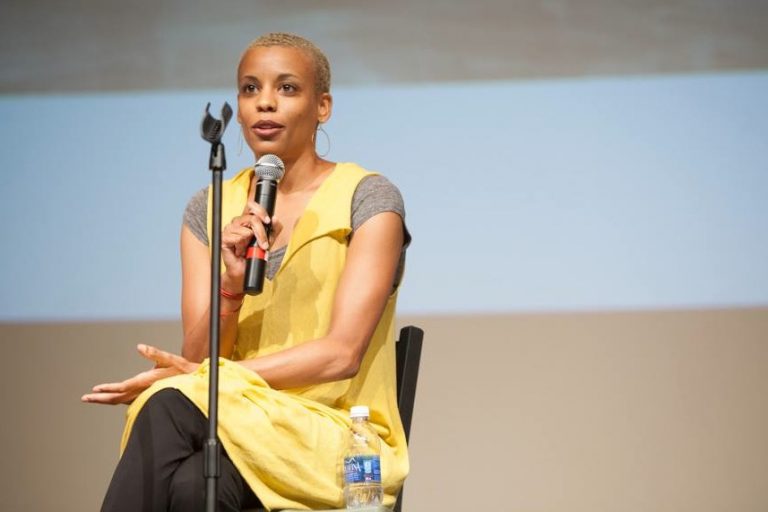We often speak of rulers and leaders in the same breath. Stories are told that chronicle their birth, alliances, and opportunities that ushered them into positions of power as though success is a mandate and time is the parchment. Their struggle for power always trumps their purpose for power. Why do we never linger on their vision? Are the historical narratives to blame that leave absences we fill in with court intrigue and drama?
In Empress, Ruby Lal paints a fascinating portrait of a woman who defied convention to become co-ruler of India with her husband Emperor Jahangir. During her lifetime Nur Jahan performed wondrous hunting feats, influenced military strategy, designed architectural wonders, and achieved many other accomplishments deemed extraordinary even by male standards of the day. Mihr un-Nisa, Sun of Women, began life as an Iranian refugee, born on the road outside Kandahar to Persian aristocrats bound for Mughal India in 1577 and her rise to prominence as Emperor Jahangir’s favored wife Nur Jahan, Light of the World, was no less than a miracle.
During the 16 years of their marriage, Nur Jahan’s increasing power within the palace corridors extended well into the Muhgal Empire as she amassed properties and wealth, gifts from her husband for the value and loyalty she brought to his rule. The hereditary power struggles that began with her husband’s declining health and his son’s ambitions only fueled Safavid expansion struggles and Deccan insurgencies that weakened allegiances and left Nur Jahan vulnerable to petty male jealousies. Nur Jahan’s rule ended with her husband’s death and Shah Jahan’s execution of the nobles loyal to her cause. She lived out the rest of her life in exile.
I wondered so much more about this phenomenal woman as her story unfolded. Palaces are fascinating backdrops for human passions. But I read Nur Jahan’s story at a juncture in history as more women step into leadership positions in government and business, exercising powers that had been withheld for so long. It made me wonder what underlying vision Nur Jahan had for not only working so intentionally to amass so much power but also displaying it openly and fighting so hard to hold onto it beyond her husband’s death.
We watch power struggles and outright wars for expansion without wondering, what, exactly, is being expanded? What is the purpose of power in the absence of a greater vision for the people who live under the rule of law?
Perhaps Nur Jahan’s mistake lay not in her amassing of power but in her inability to focus on expanding the vision of the people within the kingdom. She and Jahangir were a formidable team but his proclivities for inebriation left them both vulnerable to disreputable factions and her philanthropic nature, while helpful to the many orphans she helped get married, ultimately did little to influence a change in attitudes about women. What is the point where one stops controlling the world and focuses more on creating it? In the story of her life, very little is mentioned beyond the palace gates about how the regular people felt and coped in life. The grand scale of jewels, animal exchanges, and land grants to nobility are hard to fathom in my limited American experience. Everything about Mughal rule was so vast and extraordinary!
In a more general sense, I wonder how do leaders keep from morphing into rulers who seek to consolidate power and instead develop into cultivators of people? How can people keep power from being consolidated when leadership is so desired? What personal and social mechanisms do we create to preserve peace and inspire evolution and what language do we use to name that kind of power? On a grand scale, how do we even learn about power and use it wisely for the greatest good? The story of The Peacemaker comes to mind. In his quest to unite the Five Nations – Seneca, Cayuga, Onondaga, Oneida, and Mohawk – he brought peace to warring factions, bestowed the powers to select leadership to women, created a template for responsible leadership, and counseled the establishment of the United States of America. We know more about his purpose than his rule. He ruled only himself under the direction of the Creator to ensure life for all and, much like Nur Jahan, fell into historical obscurity.
As we try to build new systems and communities that work for the greater good of all people, we must seek out these stories that provide a glimpse into the diversity of leadership that have existed throughout time and learn from them. We must inquire about their thoughts about power and how it is used. Only then will we start to live in a more united and peaceful way.


